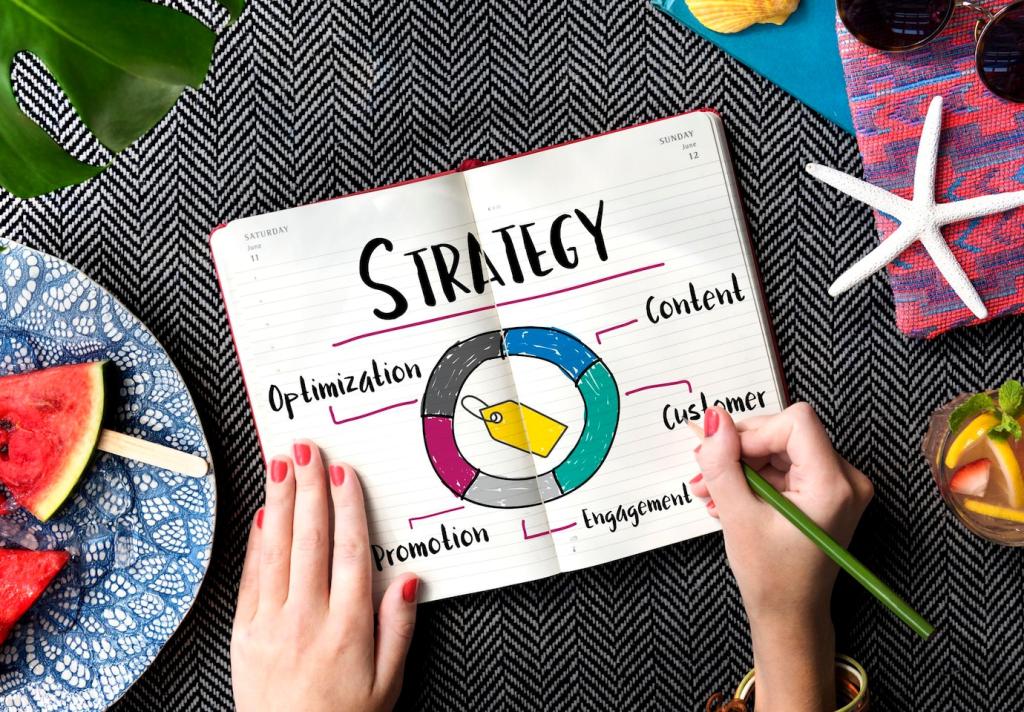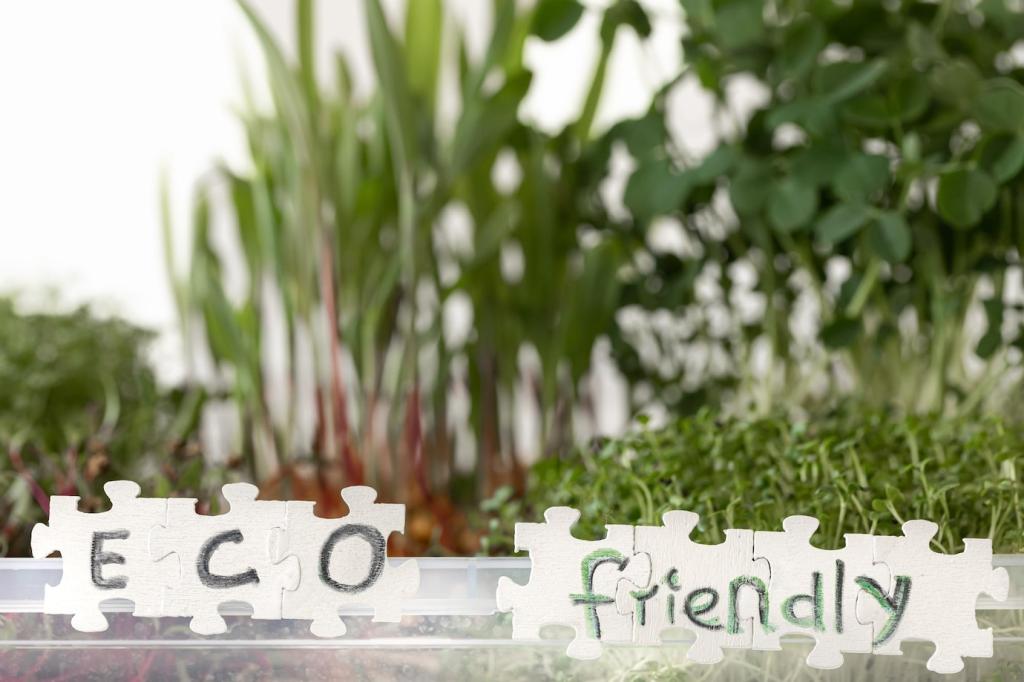Effective Messaging for Eco-Conscious Audiences
Chosen theme: Effective Messaging for Eco-Conscious Audiences. Welcome to a friendly space where strategy meets heart. We’ll explore how to speak with clarity, credibility, and optimism to people who care deeply about our planet. Subscribe for ongoing insights, and share your own messaging wins and challenges.

Shades of Green: From Light to Deep Greens
Some people choose eco options when they’re equally convenient; others plan their lives around zero waste. Imagine Ava, the thrifter who loves deals, and Malik, the new dad prioritizing clean ingredients. Segmenting your audience helps you avoid one-size-fits-all messaging that misses emotional resonance.
Motivations, Barriers, and Trade-offs
Eco-conscious choices happen at the intersection of cost, convenience, and conviction. Identify what your audience gains, what worries them, and what they might sacrifice. Then answer those tensions directly. Ask readers: what stops you from choosing the greener option today? Comment with your top barrier.
Audience Research Toolkit
Use short surveys, social listening, and five-minute interviews to uncover language your community already uses. Map moments when eco decisions happen, like restocking, gifting, or routine maintenance. Share your biggest unknown in the comments, and we’ll suggest scrappy ways to validate it next week.
Craft Value Propositions Without Greenwashing
Specificity Over Slogans
Replace claims like “eco-friendly” with measurable outcomes: twenty percent less water, certified compostable packaging, or a repair program that extends product life. When you quantify impact, you shift from a moral plea to a practical promise. Save this tip and share a before-and-after statement in the thread.
Translate Planet Gains Into Personal Wins
Tie climate benefits to daily life: cleaner air means healthier morning runs, energy savings mean funding a weekend trip, and durable goods mean fewer chores. People act when they feel immediate rewards. Subscribe for our upcoming worksheet on translating sustainability features into meaningful personal outcomes.
Claims, Standards, and Proof Points
Cite recognized standards like FSC, GOTS, or ENERGY STAR. Link to life cycle assessments, publish methodology summaries, and name third-party auditors. When in doubt, show your work. If you have a claim you are unsure about, drop it below, and we’ll recommend a proof strategy.
Storytelling That Sparks Responsibility and Hope
An Honest Origin Story
Share the moment that started your mission: the founder repairing gear in a tiny garage, or a community garden saving a summer camp. Include a stumble you overcame. Honesty creates intimacy and makes success feel attainable. Tell us your origin spark, and we may feature it in a future post.
Characters and Moments That Matter
Introduce real people—customers, staff, suppliers—facing everyday decisions: choosing a refill, fixing a zipper, joining a carpool. Small moments show values in action. Invite readers to tag someone whose everyday habit inspires them. Let your community spotlight the most practical sustainability heroes.
Invite Participation, Not Perfection
Avoid purity tests. Frame progress as a series of small, proud steps. Offer a starter challenge, like swapping one disposable for a reusable this week. Celebrate partial wins, not just dramatic overhauls. Comment with a tiny step you’ll try, and we’ll check back with encouragement and tips.
Compare impact meaningfully: “This refill prevents four bottles a month,” or “Choosing refurbished saves the equivalent energy of two laundry cycles.” Concrete anchors beat abstract percentages. Try reframing one message today; share it below and invite feedback from the community.

Visual and Verbal Language for Sustainability

Design Beyond Leaves and Earth Tones
Green palettes are fine, but originality matters. Use bold color accents, clean iconography, and clear hierarchy to highlight actions. Show product lifecycles with simple diagrams. If you redesign a panel or landing section, share a screenshot and ask for community critique—collaboration levels up everyone’s design.

Clarity Beats Cleverness
Plain language makes sustainability usable. Replace jargon with everyday words: “longer-lasting,” “easier to fix,” “keeps microplastics out of laundry water.” Write to a friend, not a committee. Subscribe to receive our glossary of common eco terms translated into simple, friendly phrases your audience actually understands.

Show the Numbers, Not Just Vibes
Use micro-charts, badges, and short captions to present verified metrics. Pair icons with one striking number and a link to details. Avoid dense walls of text. Post one impact stat in the comments and an explainer link; we’ll vote on which formats feel most useful and trustworthy.

Short-Form Video With Depth
Hook with a human moment in three seconds—then deliver a real tip, not fluff. Use split-screen before/after, quick calculations, or behind-the-scenes sourcing. End with a single, doable action. Share your favorite eco video format below, and tell us why it made you want to try something new.

Lifecycle Email Journeys
Map onboarding, replenishment, and post-purchase repair prompts. Give timely tips tied to seasons, like winter energy savings or spring garden prep. Keep subject lines concrete and benefits-led. Want a teardown of your welcome series? Paste a subject line, and we’ll crowdsource improvements from subscribers.

Community and Events
Host repair cafés, swap nights, or local clean-ups. Capture stories and turn them into snackable content. Community proof travels farther than ads. If you have an upcoming event, invite readers and share how you’ll measure success. We’ll compile the most creative ideas into a downloadable guide.

North-Star and Leading Indicators
Define a north-star metric that reflects real-world change—reusable adoption rate, repair bookings, or emissions reduced per order. Pair it with leading indicators like click-throughs to refills. Comment with your current north-star, and we’ll suggest companion metrics that keep teams focused and motivated.
Test, Learn, and Honor Consent
Run A/B tests on framing, defaults, and proof points, but be transparent about data use and respectful of privacy. Offer control over preferences and frequency. Share one experiment you’ll try this month, and we’ll check in to discuss what worked, what didn’t, and why.
Close the Loop With Your Community
Report outcomes regularly: what you tried, where you fell short, and what you will change. Invite critique and publish the roadmap. Accountability builds loyalty. Subscribe for monthly impact roundups, and reply with the toughest question your audience asked—you might inspire our next deep dive.
